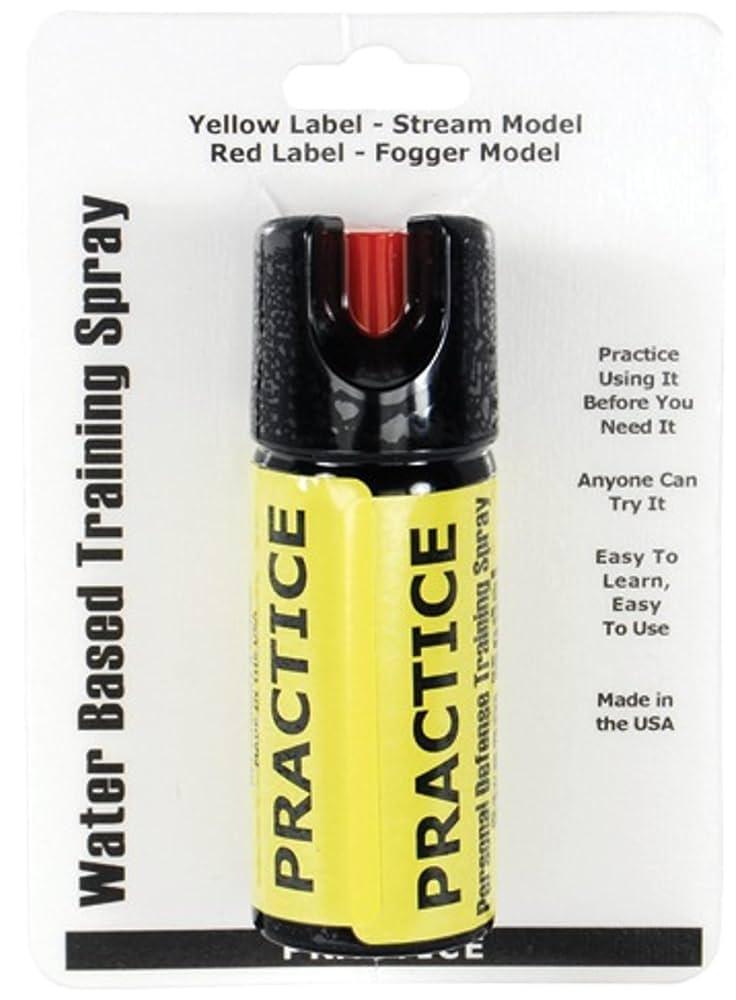Table of Contents
- The Importance of Inert Practice Spray in Safety Training
- Enhancing Realism and Precision in Tactical Drills
- Best Practices for Handling and Storage of Inert Practice Spray
- Evaluating Training Outcomes and Ensuring Continuous Improvement
- Final Thoughts
The Importance of Inert Practice Spray in Safety Training
Ensuring realistic yet safe training environments is paramount for effective safety drills. Inert practice spray offers a valuable solution by replicating real-world scenarios without the risks associated with live agents. This innovative tool allows trainees to experience the deployment and effects of sprays safely, reinforcing correct techniques and responses without exposure to harmful chemicals. The ability to practice repeatedly with inert sprays builds confidence and muscle memory, essential components for timely and effective reactions during actual emergencies.
Organizations integrating inert practice spray into their training protocols benefit from several advantages:
- Risk reduction by eliminating exposure to irritants or hazardous substances
- Improved realism through non-toxic, visually similar sprays that enhance situational awareness
- Cost-effectiveness via reusable materials and decreased need for medical oversight
- Enhanced trainee engagement resulting from dynamic and interactive practice sessions
Enhancing Realism and Precision in Tactical Drills
Incorporating inert practice spray into tactical exercises elevates the level of realism without compromising safety. Trainees benefit from authentic feedback that closely mirrors real-world scenarios, allowing them to hone their decision-making and physical responses under pressure. The subtle yet effective visual and olfactory cues generated by inert sprays enhance situational awareness and help develop muscle memory crucial for quick, accurate reactions.
Key advantages include:
- Elimination of risk typically associated with active or live sprays, ensuring a controlled training environment.
- Enhanced precision in drills by enabling instructors to monitor and correct trainees’ techniques in real time.
- Improved confidence among participants who can engage fully in exercises without fear of accidental harm.
- Facilitation of scalable and repeatable scenarios, adaptable to diverse tactical needs and skill levels.
Best Practices for Handling and Storage of Inert Practice Spray
To maintain the integrity and safety of inert practice spray, it is vital to store the product in a cool, dry environment away from direct sunlight and heat sources. This precaution prevents degradation of the chemical components and ensures consistent spray performance during drills. Always keep the container tightly sealed when not in use to avoid contamination and evaporation. Additionally, store sprays upright on stable surfaces to minimize the risk of accidental leaks or spills.
Handling practices should prioritize user safety and operational efficiency. Wear appropriate personal protective equipment such as gloves and eye protection when dispensing the spray. Avoid inhalation by using the spray in well-ventilated areas and never in confined spaces without proper airflow. Always familiarize yourself with the product’s Material Safety Data Sheet (MSDS) and follow manufacturer recommendations for disposal and cleanup to mitigate environmental impact. Incorporating these steps into your safety protocol will help training teams maximize the effectiveness of practice drills while safeguarding health and equipment.
- Store away from extreme temperatures.
- Keep containers sealed tightly.
- Use protective gear during handling.
- Operate in ventilated areas.
- Consult MSDS for emergency procedures.
Evaluating Training Outcomes and Ensuring Continuous Improvement
Assessing the effectiveness of training sessions that incorporate inert practice spray is crucial for maintaining high safety and skill standards. Employing clear performance metrics-such as reaction times, accuracy in technique, and adherence to safety protocols-provides tangible data to gauge participant progress. Additionally, incorporating real-time feedback mechanisms allows trainers to identify areas where trainees excel or require further development. This systematic approach ensures that each drill is not only safe but also educationally impactful, setting the groundwork for sustained skill retention and confidence in real-world scenarios.
To foster a culture of continuous improvement, organizations should establish a loop of regular review and adaptation. Key strategies include:
- Post-Drill Debriefs: Facilitate discussions that capture participant insights and highlight lessons learned.
- Ongoing Equipment Evaluation: Regularly assess the inert spray devices for functionality and realism to maintain training relevance.
- Customized Training Adjustments: Adapt scenarios based on performance data to challenge trainees progressively.
- Professional Development: Encourage trainers to stay updated on best practices and innovative safety techniques.
This dynamic process not only enhances the quality of training but also cultivates an environment where safety and skill excellence continuously evolve together.
Final Thoughts
In conclusion, incorporating inert practice spray into training routines offers a significant advancement in ensuring safety without compromising effectiveness. As organizations seek to enhance preparedness while minimizing risk, this tool provides a practical solution that supports realistic drills and reinforces proper technique. By prioritizing safe training methods, law enforcement and security personnel can better equip themselves for real-world scenarios, ultimately fostering safer communities.Check Our Other Blogs
- StunGun – Your Trusted Source for Stun Guns, Laws, and Self-Defense Tips
- PepperSprayLaws – Your Trusted Resource for Pepper Spray Information
- StunGunLaws – Your Trusted Guide to Stun Gun Legality and Safety




